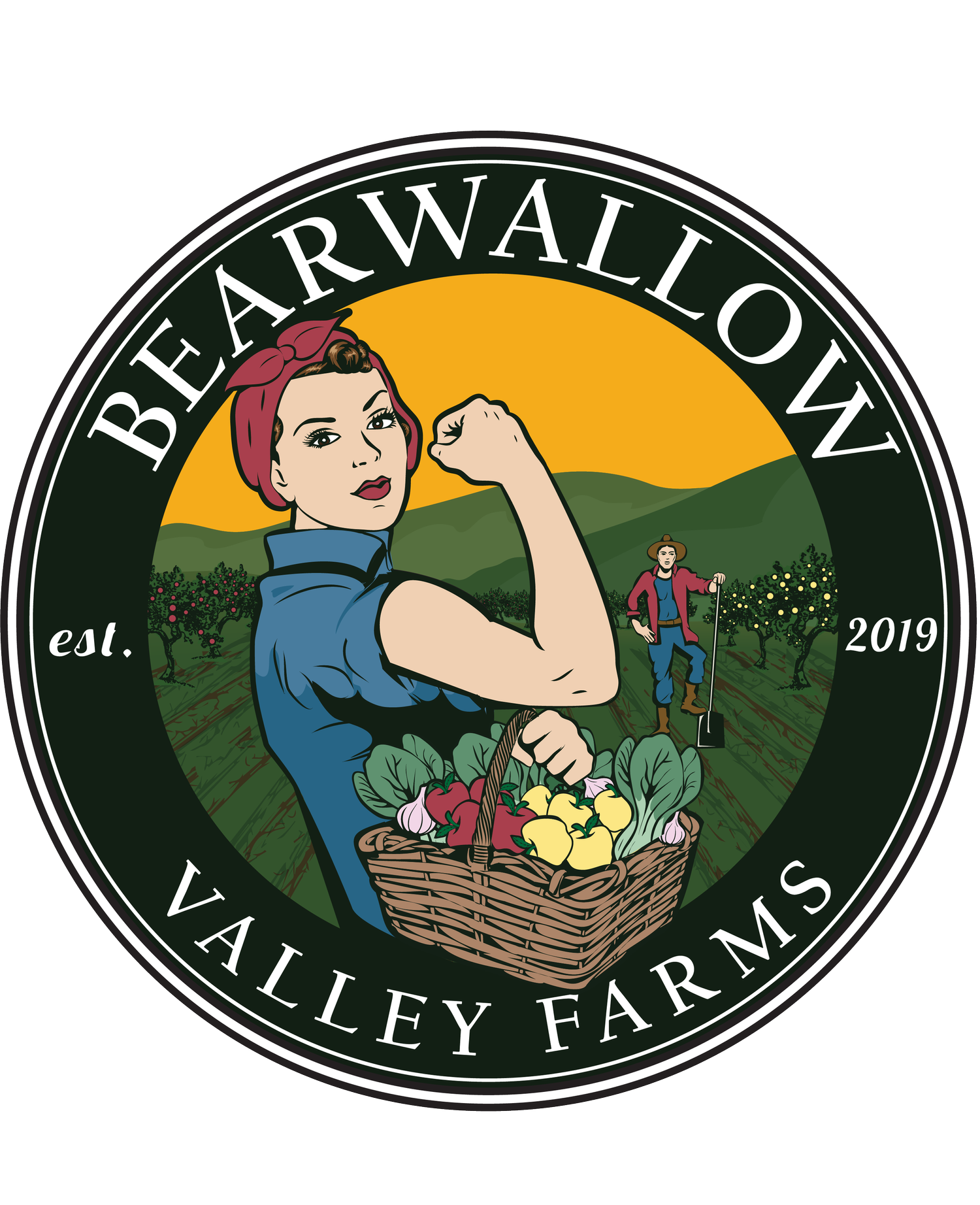Low-till, No-till
Written By: K. Roberson
Tilling is the practice of aerating the soil to allow moisture and air to get into the soil. This allows seed to germinate and encourages root growth. It also helps control weed growth and helps integrate fertilizers into the soil. Land that has not been used for annual crops recently can get tough and tilling can help prepare it or planting (Oregon State University, 2019).
So why does Bearwallow Valley Farms follow low-till/no-till practices?
Conventional tillage has its benefits to plant growth, but it can also lead to erosion and loss of nutrients (Oregon State University, 2019). Conservation tillage practices can save time an money compared to conventional tillage. The potential benefits of no-till are well-documented showing improvements to soil health and reducing annual fuel and labor investments (Creech, 2021). Fields that have been managed using no-till for multiple years generally have a higher water holding capacity than conventionally tilled fields (Creech, 2021). No-till adoption can increase soil biological activity and increase soil organic matter (Creech, 2021) .
Relying on tillage for weed control degrades soil organic matter and can disrupt soil life in ways that reduce mineral uptake and phytochemical production (Montgomery & Biklé, 2021). On the other hand, using compost and mulch can help build soil organic matter and in turn can increase crop micronutrient and phytochemical content (Montgomery & Biklé, 2021).
Relevance to Human Health
"Soil diversity provides a range of benefits to human health through suppressing pathogens, an enhancing crop nutrient uptake and thereby the nutritional value of food" (Montgomery & Biklé, 2021). Most studies show that the greatest difference in nutrient quality in crops grown with different farming practices is in the phytochemical amounts (Montgomery & Biklé, 2021). Phytochemicals are compounds in food that are related to preventing inflammation and reducing risk of chronic diseases. So next time if you are considering the pros and cons to organic vs non-organic produce, take a second to consider other farming processes that may impact the nutrition quality of produce.
Sources
Oregon State University. (2019, March 13). Tillage and cultivation. College of Agricultural Sciences. Retrieved October 31, 2022, from https://agsci.oregonstate.edu/mes/sustainable-onion-production/tillage-and-cultivation
Creech, E. (2021, August 3). Saving money, time and soil: The Economics of No-till farming. USDA. Retrieved October 31, 2022, from https://www.usda.gov/media/blog/2017/11/30/saving-money-time-and-soil-economics-no-till-farming
Montgomery, D. R., & Biklé, A. (2021, November). Soil Health and nutrient density: Beyond organic vs. conventional farming. Frontiers. Retrieved October 31, 2022, from https://www.frontiersin.org/articles/10.3389/fsufs.2021.699147/full
What Have We Been Up To On the Farm This Week?
This past week we planted garlic and flower bulbs. We are working to clean up the farm to prepare for the Winter Season. The leaves have changed all around the farm and we are excited to welcome the fall weather!




